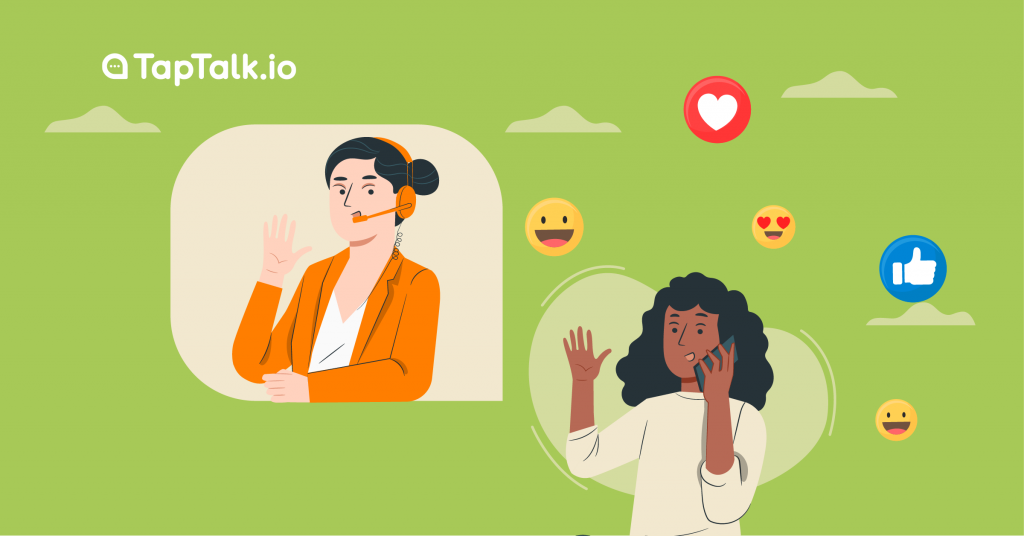
One of the biggest challenges when starting a CX project is that the aspects are so diverse, that few people share the same definition. This guide will help define and uncover some terms and provide some world-class examples of leading organizations.
Customer experience is the integration of the interactions between organizations and their customers throughout the life of their relationship. It is now a major differentiator and growth driver in the customer-facing industry.
Businesses are beginning to prioritize their customer experience. Recent Research by Adone and Econsultancy finds that Business to Business and Business to Customers marketers alike both agree that the most exciting opportunity for 2019 is optimizing the customer experience.
But compared to a few years ago only 10% of the responding company in that research regard themselves as “very advanced”. This proved that not many are aware of the importance of this matter, or even, not successful enough to implement methods to improve their customer experience.
Research by Genesys stated reasons why customer experience is important. The top three being that it improves customer retention (42%), it improves customer satisfaction (33%), and it increases cross-selling and up-selling.
After you have done those steps, now, you need to use other tools to make sure your CX turns well. One of the steps of optimizing your CX is to try to get to know your customer and understand how they react with you. The point of these steps is communication.
Communication is a scarce thing if you want to develop a good relationship with your customers. You need to open your line of communication greatly so your customers always feel that they can turn to you to talk and communicate all the time.
Using omnichannel messaging platform as a messaging solution between you and your customer might be a way to improve your customer experience. Shall we take a look to one of the trusted omnichannel messaging providers?
OneTalk by TapTalk.io has come a long way to broach these areas of customer experience as a part of their service. OneTalk integrates several messaging channels to improve customer satisfaction and customer experience as one social messaging solution. In short, OneTalk helps unify multiple messaging platforms to make it easier for you to respond to customers.
There are several features that support you to improve your customer’s experience. Start New Conversation can help you improve your sales. This feature allows you to reach your customer first and start a new case by practicing proactive chat. You can even Start New Conversation while the case is open and assigned to other agents.
You can also increase your support with one of other features, Mobile Agent, where your agent can handle customers even from their cell phones because OneTalk provides app that can be accessed from your phone. Your agent can access all of your company's messaging platforms, be it WhatsApp, LINE, Telegram, and other platforms through just one channel with the Single Dashboard feature.
And, OneTalk is providing you with WhatsApp Business API services to support your line of communication with one of the biggest messaging platforms in the world.
With all those features, you can improve your sales and support and in turn, increasing your customer’s experience by providing what they need.
Excited for more?
Reach us here and talk to our Agent. We would be delighted to hear back from you!
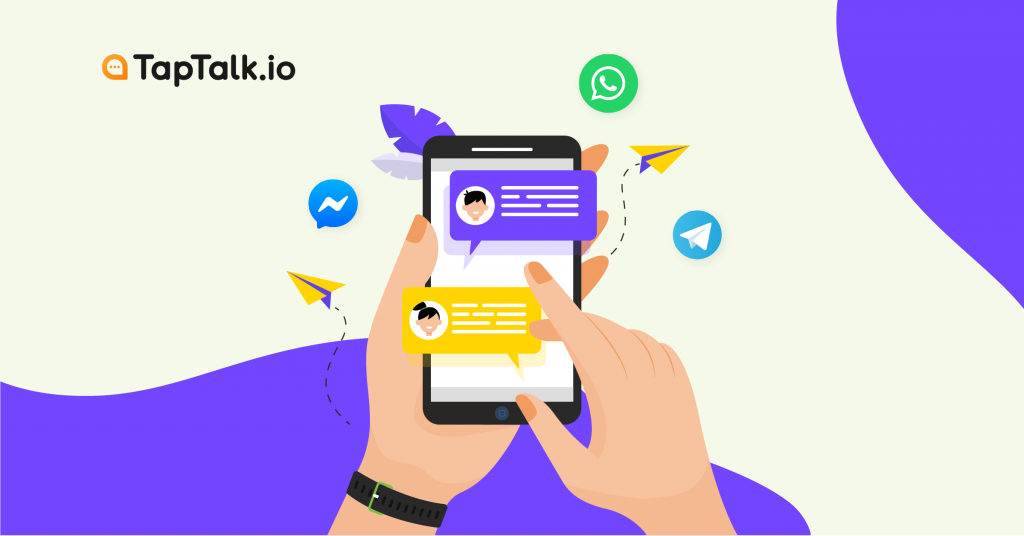
Perusahaan membutuhkan semua keunggulan kompetitif yang bisa mereka peroleh untuk menjadi sukses. Namun, menemukan keunggulan kompetitif melalui produk dan layanan mereka sendiri menjadi sulit atau bahkan tidak mungkin.
Jika Anda mencari cara untuk memberikan pengalaman pelanggan atau customer experience yang sangat baik untuk prospek dan pelanggan, sekarang bukan lagi saatnya anda menelepon.
Chat!
Menelepon membutuhkan waktu lebih milik prospek atau pelanggan anda yang tidak bisa mereka sia-siakan. Membuang-buang waktu sungguh akan membuat pelanggan terganggu dan malah memberikan pengalaman buruk bagi mereka.
Untuk itu, saatnya Anda mulai mengganti strategi customer experience Anda. Menggunakan chat atau pesan untuk memberikan pengalaman pelanggan yang baik, dapat Anda mulai dengan menambahkan saluran percakapan ke dalam perjalanan pelanggan digital Anda, misalnya saja: WhatsApp, SMS, Facebook Messenger, LINE, dll. Dengan demikian, Anda menghindari kemungkinan bahwa pelanggan akan mengabaikan telepon Anda.
Menurut survei We Are Social tahun 2020, terdapat 3,80 milyar orang pengguna aktif media sosial di dunia. Hal ini tentu mengubah kultur penggunaan gawai, dan membuat orang lebih memilih menggunakan fitur chat atau pesan yang terdapat dalam gawai mereka, ketimbang telepon.
Apa saja keuntungan dari optimalisasi chat untuk menciptakan customer experience yang baik?
Sederhananya, pengalaman pelanggan yang mulus ada untuk pelanggan Anda saat ini dan di masa depan ketika mereka menginginkannya dan yang paling penting, di mana mereka menginginkannya. Baik itu panggilan telepon tindak lanjut, respons cepat melalui chat di situs Anda, atau menjawab komentar di media sosial. Anda harus berada di sana saat mereka menunjukkan ‘Saya tertarik dengan produk Anda’.
Hasil dari menciptakan perjalanan digital yang mulus ini cukup luar biasa - pelanggan setia dan pertumbuhan pelanggan yang stabil.
Hal ini dapat dicapai lebih baik dan efektif dengan respons menggunakan chat. Waktu yang dikeluarkan oleh pelanggan dapat lebih efektif, dan tentunya, salah satu kelebihan dengan menggunakan chat untuk menciptakan pengalaman ini adalah mereka dapat melihat balasan atau pesan dari Anda kapanpun mereka bisa dan ingin.
Menjawab kebutuhan pelanggan lewat menanggapi pesan lewat saluran pesan yang mereka pilih dapat dikatakan akan menciptakan CX yang lebih baik. Pelanggan saat ini menggunakan berbagai saluran dan mode komunikasi. Mereka membutuhkan waktu respons yang lebih cepat, interaksi multi-saluran, dan transisi yang lebih lancar antara komunikasi di berbagai platform. Saat ini, pengalaman pelanggan adalah tentang kenyamanan, personalisasi, dan ketepatan waktu.
Hanya karena ada banyak platform, bukan berarti Anda perlu menghubungi setiap pelanggan Anda menggunakan setiap saluran. Itu tidak realistis atau tidak mungkin dan belum lagi, sangat memaksa dari sudut pandang pelanggan. Untuk meningkatkan komunikasi dengan pelanggan dan mendorong loyalitas pelanggan, yang dibutuhkan adalah pemahaman yang lebih baik tentang preferensi komunikasi.
Survei menemukan bahwa 49% orang lebih suka menerima pemberitahuan(notification) daripada pesan teks sementara 53% pelanggan menghubungi brand melalui email untuk manajemen janji temu. Untuk mendapatkan jawaban atas pertanyaan mereka, 45% pelanggan lebih suka berbicara dengan agent dan 37% lebih menyukai menggunakan pesan teks. Untuk jenis interaksi self-service, 48% pelanggan lebih suka menggunakan opsi online chat.
Jadi, preferensi saluran komunikasi pelanggan sering kali ditentukan oleh tujuan interaksi. Solusinya terletak pada penggunaan saluran pelengkap yang berbeda seperti menelepon, mengirim pesan teks, dan email untuk mendorong proses komunikasi yang mulus yang menghadirkan pelanggan dengan berbagai jalur percakapan yang sesuai untuk tujuan tertentu.
Dengan menggunakan chat, Anda dapat menjangkau pelanggan karena dapat menggunakan berbagai saluran yang disukai mereka. Hal ini akan menghasilkan pengalaman pelanggan yang lebih baik lagi dan meningkatkan pengalaman digital pelanggan.
Penggunaan chat juga dapat menguntungkan bagi agent atau perusahaan, karena setiap case atau obrolan akan terekam dan tercatat oleh perusahaan. Ini juga akan mempermudah karyawan Anda jika di kemudian hari membutuhkan data tersebut.
Tips untuk mengoptimalisasi chat sebagai strategi bisnis dapat dilakukan dengan cara-cara berikut ini:
Gunakan nada dan suara yang menunjukkan keaslian dan keinginan Anda untuk membantu.
Tempatkan layanan obrolan langsung di laman situs Anda yang paling masuk akal dan cenderung menghasilkan paling banyak pertanyaan dari pengunjung situs.
Dedikasikan jumlah perhatian yang sama pada detail untuk masalah dan pertanyaan pelanggan Anda seperti yang Anda lakukan jika mereka menghubungi melalui telepon atau email.
Lihat hasil obrolan Anda dari waktu ke waktu untuk melihat bagian mana yang berkinerja terbaik, apa pertanyaan paling umum, dan bagaimana mereka menghasilkan penjualan untuk melihat bagaimana Anda dapat meningkatkan atau mengubah situs web Anda.
Untuk mempraktekkannya, Anda dapat menggunakan omnichannel messaging platform. Anda dapat mencari solusi untuk mengoptimalisasi chat Anda dengan menggunakan salah satu brand omnichannel yang terpercaya, OneTalk by TapTalk.io. Salah satu fitur OneTalk adalah Mobile Agent, di mana agent Anda dapat menangani pelanggan bahkan dari telepon genggam mereka karena OneTalk menyediakan aplikasi yang dapat diakses dari gawai Anda. Agent Anda dapat mengakses seluruh platform perpesanan perusahaan Anda, baik itu WhatsApp, LINE, Telegram, dan platform lainnya melalui satu channel saja dengan fitur Single Dashboard.
Selain itu, mencatat pesan atau case pelanggan tidak perlu dilakukan secara manual, OneTalk akan membantu Anda mencatatnya dengan Fitur Case Detail. Case Detail memungkinkan Anda untuk mengetahui histori pelanggan tersebut dan membantu Anda untuk menanganinya pada kemudian hari. Dengan fitur ini, Anda akan mengetahui berapa lama seorang client telah menunggu balasan atau respon, history case mereka, channel yang mereka gunakan, dan masih banyak lagi.
Ingin mencari tahu lebih dalam? Kunjungi OneTalk dan bicara dengan Agent untuk informasi lebih lanjut.
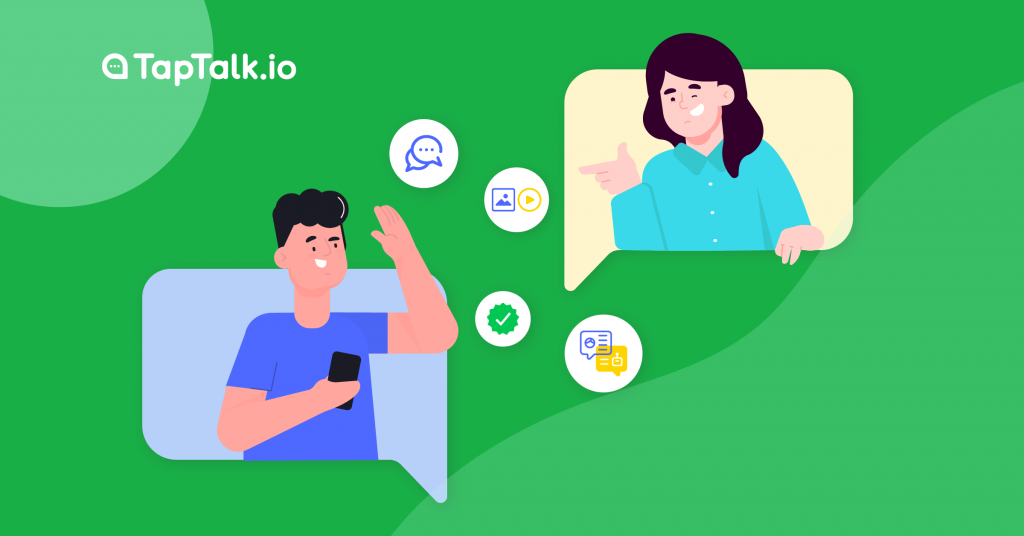
Every business's goal is to sell something to somebody. Whether it is a product, service, or data, for a price, the company has something it offers to its customers. It seems like the point of sales strategies and marketing strategies is the same for that reason, that is to sell the products of services. But by definition, the purposes and methods of sales and marketing strategies are different.
What's the difference between marketing and sales? The difference lies in how close you are to turning a prospective customer into an actual customer.
Marketing includes the methods you use to obtain new leads or prospects into your business. It includes everything that helps increase interest in the goods and services being sold. In order for you to judge which marketing options are cost-effective and deliver results, it should have observable metrics. On the other hand, sales are the process of actually persuading someone to buy your products. It also requires some degree of human contact that convinces a client to become a client. Sales refer to all activities selling goods and services. The person in charge of the sales division has the responsibility of maintaining relationships with prospective clients which ultimately lead to sales. These prospective customers have been guided to you most of the time through marketing efforts.
The marketing strategy's purpose is not to make sales. Instead, it's about meeting prospective consumers and raising their awareness of the goods, services, and company, and the opportunities for them all. Marketing practices are structured to help, but not inherently make sales. This is because not every visitor to your website or company is a good match for your product/service in your target market.
The goal of any sales strategy is fairly simple: to make sales. Although it is a goal, it is so much more complex than that. Sales teams are tasked with maintaining partnerships and leading them to a buying choice with future buyers. A sales strategy can also discuss techniques to transform one-time consumers into return buyers or sources of recommendation.
For example, a marketing strategy is something that applies behind the curtain. Their team does not meet with a customer face to face. You wouldn’t meet with a marketing officer when you visit a store. But, a sales strategy is something that a customer can see. When you go to a store, you will meet some sales promotion girls (SPG) or others. Those SPG are the implementation of a sales strategy.
The marketing strategy generally involves:
The sales strategy generally involves:
Generally, the marketing strategy is set by the CMO (Chief Marketing Officer) or VP of marketing, but it is guided by multiple marketing team members. This is because the marketing team interacts directly with groups, such as product, product marketing, service, and sales, that influence customer.
On the other hand, the sales strategy is set by the VP of sales or the chief revenue officer. Sales executives and new company owners then introduce it. Salespeople typically work on a segment instead of engaging with the whole group that marketing targets. So the sales staff will talk directly to customers or communicate at a time with a few qualified leads.
Both strategies equally have a different person in charge. It's just a different position’s name.
Marketing strategy is a long-term, forward-looking vision and an overarching game plan of any company or business with the underlying aim of recognizing the desires and wishes of consumers to achieve a sustainable strategic edge.
Usually, a sales strategy is short-term. A sales strategy is usually designed later and it draws on the marketing strategy. Depending on if the sales staff is meeting or exceeding sales expectations, you may need to make occasional improvements to this technique.
The scope of work and its duration can also illustrate the difference in sales and marketing. Sales team jobs tend to be short term while marketing teams tend to be more long term.
This is because the marketing team must maintain harmonious relationships with business partners and vendors related to product marketing. Constant contact is required for an effective marketing strategy. Everyone on the team wants to realize how the brand campaign will better meet broader business goals. As well as using instruments such as market models, demographic studies, and competition analysis, the emphasis should also be on promoting brand promise to consumers.
The scope of marketing work also includes market research, public relations, and customer satisfaction. Meanwhile, the scope of the sales team's job is to convince (potential) customers to continue to feel the need for the products you sell.
A good sales strategy draws on the marketing team's efforts by securing individual customers who are most likely to purchase. This is typically so unless a large portion of their prospects is guided by the sales staff. Direct sales departments are busy pursuing prospects, making calls for exploration, qualifying candidates, product or service pitching, developing partnerships, and turning prospects to clients.
The difference in sales and marketing can also be seen from the priorities and work functions of these two divisions.
In terms of work priorities, the difference between these two positions lies in the activity targets. The marketing team's priority is to reach customers and build good relationships with customers so that they can become loyal customers. You can imagine a clear advantage if several large companies become regular customers of the products that your company has.
The more regular customers, the bigger the profit, of course.
Apart from that, these regular customers will be there if the service and response from the sales team also support the quality of the products and customers that have been reached.
The function of the sales team is to accommodate and target customers while helping them meet their needs with the products offered. The difference in sales and marketing in their functions and priorities is precisely what makes them synergize with each other.
| Pros | Cons |
| Promotes Your Business to a Target Audience (You have a better chance of receiving the perfect customer because you know your target) | Hard to Generate a Momentum(For a small business creating momentum may be hard because your brand is still small and not many people know about you yet) |
| Helps You Understand Your Customers(After knowing your targeted customers, you can understand them better) | Cost(Big companies can afford to waste time and money focusing on a marketing strategy that struggles because they can regroup and move on. As a small business owner, though the return on spending on a marketing campaign might be poor, and that means you have spent months to cover that) |
| Helps Brand Your Business(Your marketing strategy isn’t just about boosting leads and converting them into buyers, it’s also about expressing the culture, values, and purpose of your business. By doing a marketing strategy you also help introducing your brand to others) |
| Pro | Cons |
| Strengthens Customer Engagement and Commitment(Salesperson usually interact with their customers and they can ultimately build a stronger connection with customers) | May Lower Brand Awareness(The overuse of some discount discounts can lead consumers to assume that the cheaper price is the normal price, which may cause them not to believe that the quality of the goods correlates with goods from comparable rivals offering less frequent or no price reductions) |
| Quick to Develop(Compared to other types of strategy, some sales strategies can be quickly created and made available within a market) | Distributors Won’t Be Prepared(Some consumer sales strategy require the assistance of distributors (e.g. retailers), but not all distributors can support the sales strategy, particularly if the promotion requires the distributor to do additional work) |
| Help Sells More of Your Product(In cases where stock replacement is needed (e.g. items approaching expiration date; clearing inventory to make way for new models), sales strategy may be used to easily decrease supply.) |
From recognition to purchase, both marketing and sales are integral aspects of the consumer journey. Your business teams need to align with these two strategies, and that means recognizing all points of convergence and divergence. According to Aberdeen Group, sales and marketing alignment can lead to a 32% increase in year-over-year revenue growth.
Communication between your sales and marketing departments is vital to aligning your sales and marketing activities. This means that sales have feedback on the types of marketing material that would be effective, that shared priorities are defined, and that everybody uses the same language and knows the vocabulary of each other.
Sales and marketing roles intersect, even though they are often grouped independently. Enterprises that recognize critical overlap areas may gain more value from their teams by pooling efforts. After all, both sales and marketing share the same objective: to increase sales.
Awareness. An initiative to raise awareness about a product or service is the first step in the sales process. Efficient awareness-building efforts may help a prospect to remember a brand or product name or may guarantee that an organization makes a shortlist for purchase consideration.
Engagement. Engagement efforts draw on an initial marketing strategy to strengthen the relationship of the customer to a brand or product. Marketing resources for interaction can be longer (e.g. whitepaper or video) relative to a more simplistic awareness item (e.g. direct mailer or radio advertisement).
Conversion. Conversion is the vital transformation of a new client from an unknown figure to a recognised leader. In the case of marketing departments, a conversion may be the completion of an online form, the instigation of a webchat, or a phone call to a customer service line.
Retention. And after a buy, a marketing team may help a company develop its repeat customers. Maintaining a marketing role tends to sustain visibility and commitment during sales. This can include email newsletters or webinar invites that help consumers get more value from a product. In particular, the retention role of marketing is important for subscription services.
Follow up. The main sales feature is to follow up on the lead created by the marketing department. Successful enterprises typically create a formal hand-off mechanism such that each marketing-qualified leader receives accurate and prompt follow-up from a sales team member.
Relationship building. The "hard sell" era begins to disappear. Modern sales rely on developing relationships to help establish loyalty between the customer and the seller. Effective salesmen should consider the interests of the purchaser to create a persuasive—but not a persuasive—message to better distinguish the commodity of the business.
Closing. Often salespeople are judged by their willingness to transform leads into buyers. While some may envisage a face-to-face meeting and a handshake as the end of a sale, many companies are now closing deals online or over the phone. This could increase the responsibility for closing the sale to more workers.
Retention. Sales and marketing are responsible for improving customer satisfaction. When checking in with a current customer, a sales staff member may further show an engagement in the future of a long-term customer, not just a one-time deal. Continued efforts to develop good partnerships will help boost satisfaction and contribute to "upselling"—additional purchases outside initial purchasing.
How do the sales and marketing departments accomplish their objectives? Tactics differ depending on the culture of the market and the business. They've improved over time, too.
These are some of the traditional sales and marketing strategies that are at the heart of each practice.
Outbound marketing. Marketing Outbound. Outbound marketing stands for conventional "push" marketing. This covers tv ads, direct mail posters, and cold calls. Outbound marketing strategies are also successful in creating strong demographic recognition. However, some new marketing tactics challenge the capacity of outbound marketing to create compelling, personal marketing messages that establish long-lasting business-customer relationships.
Inbound marketing. Inbound marketing is shifting marketing efforts from "drive" to "pull." The key concept behind inbound marketing is to attract new buyers by designing marketing materials that support users. For example, an investment company can deliver a free retirement planning webinar. Inbound marketing aims to rely first on offering something useful to the customer, rather than having an inward focus on presenting a business message.
Limiting the opportunity. The notion of a "limited-time bid" is popular in retail, but generating a feeling of scarcity is a strategy used in many industries. A limited opportunity can be limited by time (e.g. a decent deal for this month only) or availability (e.g. the last pickup on the lot).
Focusing on pain points. A successful salesperson can determine the benefits of a product or service concerning the needs of a customer. This involves recognizing the day-to-day problems that the customer faces and reflecting on how the product can address these issues. Focus on pain points may often help to develop a friendship by expressing a salesperson's concern about the customer's issue.
Making the assumptive close. The assumptive close is a sales tactic that transforms the "yes" order into a "no." For example, instead of saying, "Do you want to try this service?" a salesperson might ask, "When would you want us to arrange the installation?"
While having the same end goal, marketing and sales strategy are two different things. Marketing advises and draws leads and prospects to your brand, product or service. Sales, on the other hand, deals exclusively with prospects to enhance the appeal of the company's solution to turn prospects into consumers.
There is a lot of pro and cons of both strategies which should take your attention because they will affect the revenue of your businesses.
If your small business is having trouble balancing the marketing and sales strategy, you could always use tools and other solutions. You don’t even need to differentiate between them, you can simply use an omnichannel messaging platform. Using a trusted omnichannel messaging platform will helps you balance it. OneTalk by Taptalk.io as an omnichannel messaging solution can increase your sales, marketing, and support.
OneTalk can help you execute the constant contact that you require to balance marketing and sales strategy. With our ability to integrate multiple messaging platforms, OneTalk has all the features to enhance your business. One of them is Broadcast Message and Start New Conversation. The Broadcast Message feature allows you to send messages to multiple recipients all at once. Your marketing/sales strategy will be more interactive with this feature, sending them multimedia content such as photos, videos, and even pdf files. Meanwhile, Start New Conversation features allow you to do proactive chat and start a new case so your business can reach your customers first. With these and a lot of other features provided by OneTalk, you can easily balance your marketing and sales strategy.
In this pandemic situation, OneTalk, which integrates messenger platforms in one dashboard, can maintain your communication with your employees because you will be able to continuously monitor their work through the Real-Time Agent Activity Tracker feature. This feature will allow you to see in real-time the cases that are being handled by your employees.
Also, OneTalk creates an effective work system in the aspect of corporate communication with customers. With Assignment Rules which have assignment systems for different customers, you can easily share cases with your agents. The Topics feature also allows you or your employees to sort out the topics discussed by the customer so that they can easily categorize them.
Oh wow! Just how much are the features on OneTalk? Well, it seems like a lot, but there are more to be found. You can even utilize the right platform! Other than giving you privileges of integrating multiple messaging platforms, OneTalk also provides you with WhatsApp Business API services to support your line of communication with one of the biggest messaging platforms in the world. Use this to apply your Marketing Strategy and Sales Strategy and increase your sales like never before.
Want to know more, contact our agent to explore all the features we provide for you.

Design is not easy to expand. Design is a system that requires driving elements. It will be just an “empty entity” that must be filled by “something” so its existence is recognized. It has become a huge part of companies to make them stronger and successful in this competitive digital market.
Improving design through work, without setting standards, is a myth. With each new promise, new ideas for color palettes, typography, and patterns emerge in the product, increasing diversity and increasing maintenance costs. Each new employee increases design entropy. There is only one way to stop the growth of this chaos. A commitment to run a design system.
A design system can help by scaling. Design can scale, but it can only scale with design system.
The design system is now very popular. Why? Because it is effective like everyone says it will be. Applying a design system to your business will bring a lot of benefits:
10 Steps to build design system
1. Evaluates current UI inventory and note differences
To start a good design system, it is best if you evaluate what you already have. In this aspect, consider which element will be the best, and which part do you want to replace? Try to find differences and inconsistencies between your products or pages.
A few elements that you need to pay attention are color schemes, how every color is used, Stylistic text choices, photo libraries, icon libraries, UI patterns, page templates, and other graphics.
2. Prepare your team to be onboard
You need a team to implement and manage a design system throughout the product design cycle. For most design systems, teams need front-end designers and developers. Start by identifying the skills you need and then identifying the people who have them.
3. Establish principles and rules for the design system
The design system is a system of values shared throughout the design system. This includes the techniques - CSS in Javascript or something else - that you will use to write your design scheme; How will you distribute the design system; And if you're going to use one of your digital products as a starting point for the system.
4. Color palletes
Color is an important aspect because it can impact all of your work. Decide on the hue and color for each of the colors you use most often, and write down final instructions on how to use them. Of course, this includes your primary brand colors, but also pay attention to your secondary colors. For example, what color is your text? Your link? Special keys? Background?
Be as detailed as possible when writing your code. Check out your own design style to fix any problems you might encounter while testing the color palette in the product UI.
5. Typographic elements
Now, you would want to review and finalize your typographic choices. Design systems can be more technical than static pattern guides, so take advantage of that. Note your preferred text size, spacing, font, etc., as well as any rules about where and when to use it. For example, how big is the section title in your blog post? What fonts do you use for an on-site call-to-action?
Don't ignore subtle details, like line height, font weight, or custom kerning rules.
6. Graphic design assets
The well-designed design system allows you to directly drag and drop visual components into your new prototype. The more graphic design assets you collect in your design system, the faster you can progress your work for future projects.
Don't forget to include any appropriate code snippets or documentation that the developer might need. These small aspects will be useful during the development stage.
Within all your graphic design assets, you will need libraries to implement: icons libraries, photography libraries, illustrations, and branding images.
7. Standardize Other Style Properties
Design decisions also include complementing grid patterns and other characteristics not covered in the previous section, such as spacing. As with the other components of your design system, here, standardization also aims to remove inconsistencies.
8. Build the First Design System Pattern
Don’t focus on building all the patterns in one go, because building design system pattern can be an iterative process. Build it one by one by identifying the best architecture for your pattern library.
9. Run a Sprint Retrospective
Sprints can be a great way to ensure fast learning across teams. All product teams should set up regular retrospective sprints to analyze progress and make necessary improvements.
10. Conclusion
All of the steps mentioned here will provide you with a set of design guidelines that promote a consistent design language. Don't think of a design system as a project. Instead, treat it as an ongoing process that requires rapid iteration.

Every business that relies on websites as a customer engagement platform is always trying to find ways to increase visitors numbers on their website. There are two ways to achieve this𑁋sitting idly and just waiting and answering customer’s questions and complaints when they ask you or show your initiative before your customers reach you. While you ponder which ways are better, you should know that the second option, you can show your initiative before the customer asks for it. This explains how proactive live chat works.
You can definitely pick whatever approach you want, but reaching the customer first before any problems arise to show that you can deal with a potential problem as a result and will be more effective. The customer will get a detailed response and feels valued. So, how is proactive chat explained and how can it grow your business?
What is a proactive chat?
Proactive chat is the ability to target website visitors and then, using curated visual cues and sound effects, deliberately invite those visitors to participate in live chat interactions. In other ways, proactive chat messages are automated messages that invite your site visitors to start a conversation. This feature helps the live chat agent to take the lead, show interest, and willingness to solve customer problems as quickly as possible.
Much like an actual store salesperson, customer support experts invite visitors to talk. Taking the first steps with proactive chat software is now easier than it was years ago. Want to see some proactive chat best practices to use in your business? It's the next stop here.
Proactive chat best practices
Proactive chat is the perfect chance to show customers how much you care. It's a lot more effective to reach out to a client first and show that you can give a solution before problems arise or before complaints come.
There are several tactics that allow you to interact with customers instead of frustrating them. Now let's find out the do's and don'ts of proactive live chat, and pay attention to what you should and shouldn't do to make proactive messages work amazingly:
1. Know your time
For starters, set the message trigger to 1 minute. In general, you don't want to charge visitors all at once, give them time to look around. But how do you know which time is the right one? So, you can check the average time spent on the page using Google Analytics or other similar tools, and determine when a customer is aware of the content but will leave. Next, send a proactive chat message offering assistance.
For example, you see a customer completing an order for one minute. Run a proactive message under 1 minute, saying "Hi! Do you need help with your order? I’ll be happy to answer any questions."
2. Make your proactive conversation personal
With this type of chat, there's no point hiding behind a mask. Show your clients who you are, introduce yourself, and have friendly conversations. Try to avoid common yes / no questions and make sure your conversation is meaningful. You can also configure your messages according to the country, city, or language of the customer's current browser using a dedicated chat engine for that.
3. Keep the conversation specific and relevant
Use two different methods when someone is browsing pricing pages or technical support pages. For example, starting a sales presentation if the customer is facing some technical problem is not the best scenario. The customer is waiting for a solution, not another agreement. Since your goal is to provide service, prioritize customer needs. Choose their preference, and send a proactive message with several options in it.
For example, instead of "Do you need help?" Say "Hey! Need help choosing great leather handbags?"
4. Know your limits
Allow your customers to close chat windows or ignore conversations when they want to. Make sure that your help is adequate and that you don't annoy clients. For example, the message "Hi, I have added 1 item to your cart. Continue to the Payments section.” This message can sound too pushy. Also, don't put flashy live chat windows on every page of the site. Select a few pages instead, make the most of it there.
5. Limit the number of Proactive Messages
There is a trigger that lets you monitor how many preemptive chat invitations you have actually sent. Set it up if you don't want to bombard customers with multiple messages per page. This rule is the "number of preemptive invitations sent" and "the time since the last proactive invitation".
OneTalk offers you some features that allow you to reach customers before problems arise. One of them is Start New Conversation feature that allows you to start a case so that your business can reach your customer first. You can use this feature just by entering your destination number. Practicing Proactive Chat can also be done by another feature by OneTalk, Broadcast Message. You can reach a lot of customers all at once by sending proactive messages. You don’t even need to worry about sending messages that are too long to read, because this feature allows you to preview your messages before you hit send. Reaching your customer through broadcast messages can enhance your performance as a proactive business.
We currently offer 14 days free trial (no credit card required). Let's reach your customers using OneTalk, contact us at sales@taptalk.io, or visit our website for more info!
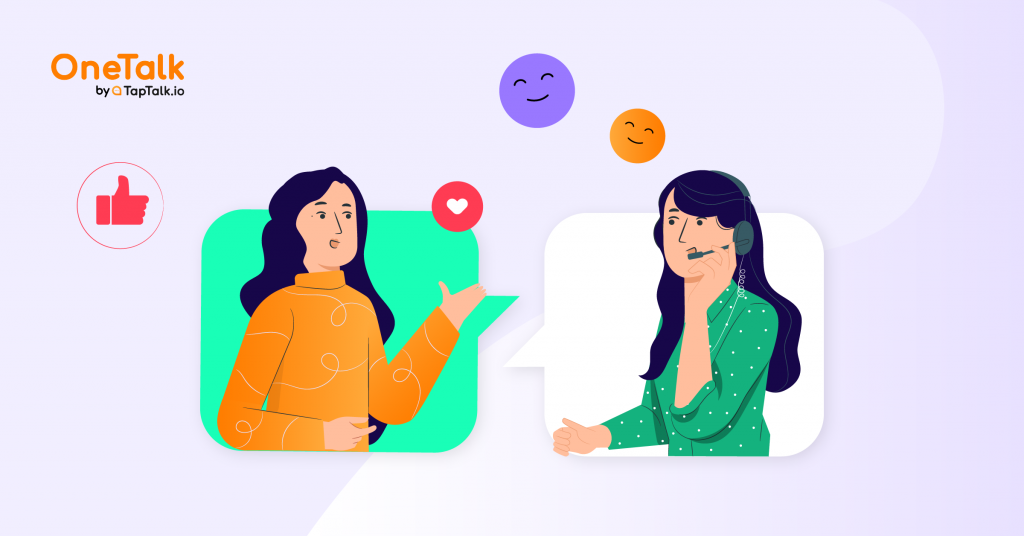
An extremely important part of growing a profitable company is managing customer retention. According to a Harvard Business School study, growing customer retention rates by only 5% will increase the earnings of a company by 25-95%. What is customer retention? Customer retention is a series of practices targeted at retaining consumers and converting them into committed customers for the long term.
Any business requires a new customer. But, the simplest and most predictable source of potential revenue comes from loyal clients who already know your business and have bought it from you. It costs less to keep customers than to obtain them, and both contribute to the bottom line of the business.
It's important to be aware of customer satisfaction because it allows you to realize how committed and happy your customers are, how powerful your customer support is, and whether any warning flags can scare future customers off.
So consider using these few support strategies to maximize your profitability by retaining the customer you currently have until you go all-in on approaches intended to bring new buyers into the sales pipeline.
Preventing a customer from leaving is the most simple way to guarantee customer retention. You will still sense the signs of the customer's imminent exit if you really pay attention.
You need to define the key variables in customer behavior, such as purchasing habits, product utilization, and customer service inquiry history, to catch these 'alert' signals. Then, before they churn, you would need to analyze these signs and take steps to deter your clients. So you need to pay attention to your customers.
Asking your customer is the perfect way to find out what they think of your business. A perfect starting point for knowing what needs to be fixed with the overall experience is to use consumer surveys to gather feedback and diagnose future frustration.
To get a deeper insight into what is working, and what is not, give your clients a fast online survey to complete. On any topic, you'll never satisfy every client, but surveys will help you find trends that you've overlooked. To encourage the consumer to convey their views more fully where possible, a successful survey should include a mixture of multiple-choice questions and free text response areas.
When you ask them for their opinion, customers love it. It means that you care and are willing to go the extra mile to hold them.
The secret to online customer retention is continuous contact with clients through their favorite platform. There are 3.9 billion email users worldwide today, and even though social media is very popular, email is still the primary contact medium for customers. Use email to follow up with customers who needed help. Ask for input from customers, ask them to leave ratings online, and gather information.
At first sight, this may sound a little simple, but what a business finds to be outstanding customer service does not necessarily fit what the customer feels is excellent customer service.
Personalizing your experiences with customers provides an opportunity for them to stick with you. They feel as if you care, and this provides a stronger bond with your business. Via enhanced user service, the use of personalization increases customer engagement rates.
You reward the customers who regularly order from you by establishing a consumer loyalty program. This offers them an opportunity to keep shopping. It also reveals to them that the business pays attention to its customers. You can use points or other forms of reward to your customers. It's often necessary to provide exclusive discounts and other benefits as well.
A program of customer loyalty will inspire your customers to buy from your company. This keeps the levels of customer satisfaction high.
All of these strategies can be helped by the presence of a CXM (Customer Experience Management). CXM software facilitates and enables customer retention by helping you monitor customer activity over time. It will warn you about their shopping habits, the use of goods, and when they avoid ordering from you. To learn what their issues are, you can even monitor customer service experiences. These primary consumer behavior variables can serve as alert signs that you can use to maximize customer retention.
There is a software that can help boost CXM. OneTalk by TapTalk.io, it uses an omnichannel networking network. Through OneTalk, you will have a lot of features to make the experience of your consumer delightful and extremely fun as a trusted omnichannel messaging network. The omnichannel function of OneTalk helps your agent to manage several client cases at one time. You should also keep an eye on the work of your agents and simultaneously push up your sales and marketing.

Dahulu, branding didefinisikan sebagai nama, slogan, tanda, simbol atau desain, atau kombinasi dari elemen-elemen tersebut, yang membedakan satu perusahaan, produk, atau layanan dari yang lain. Saat ini, branding menjadi lebih kompleks dan bahkan lebih penting.
Branding, secara konvensional, adalah praktik pemasaran di mana perusahaan membuat nama, simbol, atau desain yang mudah diidentifikasi sebagai milik perusahaan. Ini membantu dalam mengidentifikasi produk dan membedakannya dari produk dan layanan lain.
Branding penting karena tidak hanya memberikan kesan yang tak terlupakan pada konsumen, tetapi juga memungkinkan pelanggan Anda mengetahui apa yang diharapkan dari perusahaan Anda. Ini adalah cara untuk membedakan diri Anda dari pesaing dan mengklarifikasi apa yang Anda tawarkan yang membuat Anda menjadi pilihan yang lebih baik. Branding dibangun untuk menjadi representasi utama tentang “siapa” perusahaan Anda dan bagaimana perusahaan Anda ingin dilihat oleh pelanggan Anda.
Bagaimana Anda tahu jika brand Anda cukup kuat untuk memberi Anda nilai internal dan eksternal yang Anda butuhkan? Mulailah dengan pertanyaan-pertanyaan di bawah ini.
Selain pertanyaan-pertanyaan di atas, lanjutkan dengan mengetahui betapa pentingnya branding yang baik untuk menciptakan usaha yang sukses. Karena, branding memiliki kaitan erat terhadap kesan dan citra perusahaan, juga berkaitan dengan kesuksesan usaha Anda.
Mengapa branding itu kritikal bagi usaha yang sukses?
Branding memang sangat kritikal bagi sebuah perusahaan, karena dampak pada keseluruhan perusahaan. Branding dapat mengubah cara orang melihat perusahaan Anda, dan dapat mendorong usaha baru untuk meningkatkan branding mereka.
Di bawah ini adalah alasan mengapa branding itu sangat penting untuk usaha yang sukses:
1. Branding dapat meningkatkan niat customer untuk membeli produk
Hal pertama yang membuat branding menjadi kritikal dalam usaha adalah karena Branding dapat membangun kepercayaan customer terhadap produk lewat storytelling. Dengan cerita ini brand bisa memposisikan produknya terhubung kepada target pelanggan. Selain memposisikan produk dengan tujuan yang ingin dicapai pelanggan, brand yang baik juga akan meningkatkan kepercayaan pelanggan terhadap produk, yang pada akhirnya juga akan meningkatkan niat seseorang membeli produk Anda.
2. Meningkatkan penjualan produk melalui branding
Branding sangat berpengaruh terhadap penjualan melalui faktor desain. Desain yang menarik membuat persepsi yang berbeda atas sebuah produk yang nantinya berujung pada pembelian. Ketika seorang pelanggan atau calon pelanggan pertama kali membuat citra dari branding Anda, maka saat-saat penting terjadi ketika mereka memutuskan apakah brand Anda cukup menarik atau tidak untuk digunakan.
3. Branding dapat menambah visibilitas perusahaan
Persaingan dengan kompetitor yang selalu ada membuat perusahaan menambah visibilitas yang menarik agar menangkap perhatian pelanggan. Pelanggan akan mencari lebih dalam mengenai perusahaan Anda atau brand Anda, karena produk atau brand Anda meninggalkan kesan yang lebih diingat, dibanding perusahaan kompetitor lain. Visibilitas ini nantinya akan berkaitan erat dengan penjualan atau sales perusahaan.
4. Memperkuat perusahaan dengan pesan branding
Dengan branding yang menarik, customer akan mudah mendapatkan pesan tentang perusahaan anda. Dengan ini perusahaan memiliki konsistensi terhadap produk atau jasa yang diberikan.
5. Branding yang baik akan menambah pelanggan baru
Selain berkaitan erat dengan penjualan, branding ini juga akan mempengaruhi faktor referal. Promosi dan marketing dari mulut ke mulut atau referal ini akan membantu bisnis. Perusahaan yang paling sukses, kecil dan besar, memiliki satu kesamaan. Mereka telah dengan kuat menempatkan diri mereka sebagai pelopor dalam industri mereka dengan membangun branding yang kuat.
Ketika brand meninggalkan kesan baik dan kesan produk juga berbanding lurus, maka pelanggan baru akan bermunculan dengan rekomendasi pelanggan yang sudah puas akan pelayanan dan produk yang mereka nikmati. Hal ini akan kembali menambah sales atau penjualan perusahaan.
Bagaimana menciptakan branding yang meningkatkan kesuksesan usaha?
Untuk mencapai branding yang dapat meningkatkan kesuksesan perusahaan atau bisnis Anda, Anda dapat menggunakan omnichannel messaging platform yang terpercaya. Brand omnichannel yang terpercaya, OneTalk adalah brand omnichannel yang dapat membantu anda mengembangkan branding perusahaan.
OneTalk, memungkinkan Anda meningkatkan sales, marketing, dan support perusahaan dengan berbagai fitur menariknya. Dengan All-in-one inbox, OneTalk memungkinkan Anda mengintegrasikan beberapa platform perpesanan sekaligus, dan akan meningkatkan customer support yang dibutuhkan pelanggan. Sehingga, pelayanan ini akan menciptakan image brand Anda yang mengutamakan kepentingan pelanggan.
Dengan meninggalkan kesan yang berorientasi pada pelanggan, mereka akan mengingat perusahan Anda sebagai brand yang menyenangkan dan memprioritaskan kenyamanan pelanggan.
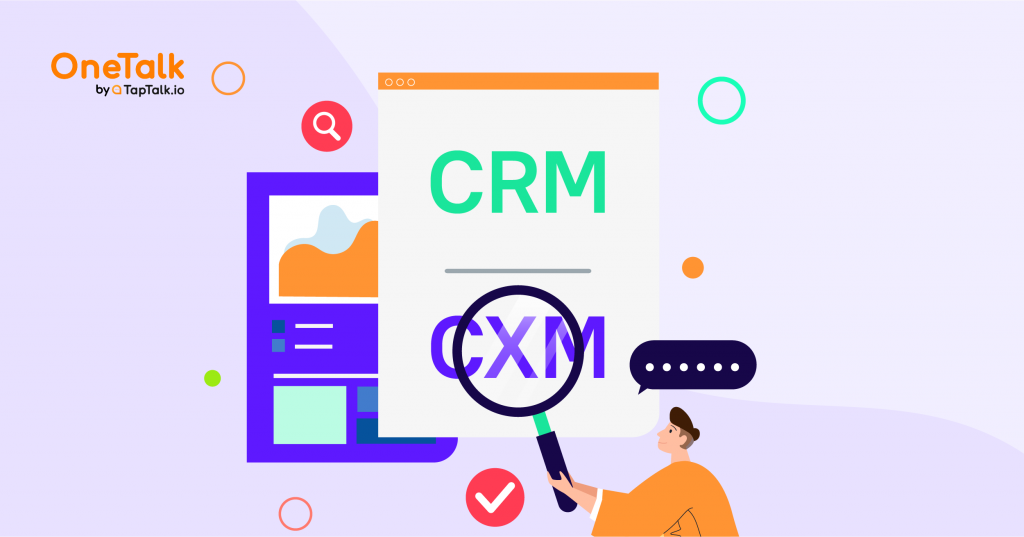
There is a clear difference between Customer Experience Management (CXM) and Customer Relationship Management (CRM). To find out, we have to look at the CXM definition and CRM definition.
Customer Experience Management (CXM) is the practice of designing and responding to customer interactions to meet or exceed customer expectations and increase customer satisfaction, loyalty and support.
Meanwhile, Customer Relationship Management (CRM) is a business strategy that optimizes profitability and revenue while promoting customer satisfaction and loyalty. CRM technology enables strategies to identify and virtually identify customer relationships and manage them. CRM software provides capabilities to companies in four segments: sales, marketing, customer service, and digital commerce.
Differences
Customer relationship management (CRM) software tracks sales leads and customer interactions. CRM facilitates the development of relationships for organizations. CRM systems have many advantages, but not all businesses need them.
Customer Experience Management (CEM or CXM) is a broader information gathering process for tracking, monitoring, and managing all interactions between customers and organizations throughout the customer life cycle. Focus on unique perspective insights by digging deeper into the customer experience, listening to the customer, analyzing feedback, understanding the customer's perspective, and optimizing the customer experience.
CRM helps build relationships with your organization. CXM focuses on monitoring and improving the customer experience.
While CRM is more system-centered and captures customer data and processes, CXM takes a more qualitative approach to focusing on customers and making quantitative information more practical.
Value to organization
CRM solutions have been poorly reported over the past few years, but are successful enough as a customer logging system to capture, store, process, and share data for staff management, process efficiency, and business analysis purposes. But of course, this area offers little immediate benefit to customers.
CXM uses software to control the customers and staff who serve them, making it relevant to apply technology to support an overall customer-centered strategy and achieve a competitive advantage. We will shift our focus to providing personal and excellent customer service.
CXM solutions shift the focus from data management to implementing customer information at the right time and place, and can be used to provide a consistent customer experience that better pleases customers.
CXM is more qualitative than quantitative and has the basic features that make CRM information viable and a stronger objective for customer results. If a CRM system struggles to use customer data for practical use when it can be applied to help interact with customers, CXM completes the information journey for customer experience and measurable benefits.
In addition, the CXM solution needs to provide a great customer experience on the channels and devices that customers want to use, such as web, web chat, SMS, mobile, smart apps, email and voice. Fixing these bits will help improve customer satisfaction, retention and response.
Adopting CRM alone does not improve the customer experience. They tend to overdesign, complicate issues, get excited about technology, and forget their original purpose. Without a human touch in the middle, it was just cold, emotionless data.
Even worse, in this digital era, CRM does not have what it takes to store all the important data needed for modern business: activity on websites and mobile apps, emails, push notifications, support tickets, payment systems, and more.
In some ways, CXM aims to provide the last mile of CRM (the intersection of customer knowledge and customer satisfaction), at the right time and place that can be actively leveraged across channels and devices. It has the function of providing customer information. It affects customer experience.
It’s time to improve your business by developing your own CXM. There are some tools that can improve the CXM. One of them is using an omnichannel messaging platform, such as OneTalk by TapTalk.io. With OneTalk, as a trusted omnichannel messaging platform, you can have a lot of features to make your customer’s experience delightful and amazingly fun. OneTalk's omnichannel feature allows your agent to handle multiple customer cases at one time. You can also keep an eye on your agents’ work and drive your sales and marketing up at the same time.
OneTalk enables you to stay on track with data but also gives a human element. Your data is not just some emotionless data, but gathered with qualitative analytics that your agent can add to your analytics. You can achieve this with Disposition features, and many useful features in OneTalk.
This tool will improve your sales, marketing, and support. The other features are a bonus to improve your customer service experience.
Reach us by phone at (021) 27939266
© 2020 - 2023 TapTalk.io (PT Tap Talk Teknologi)
